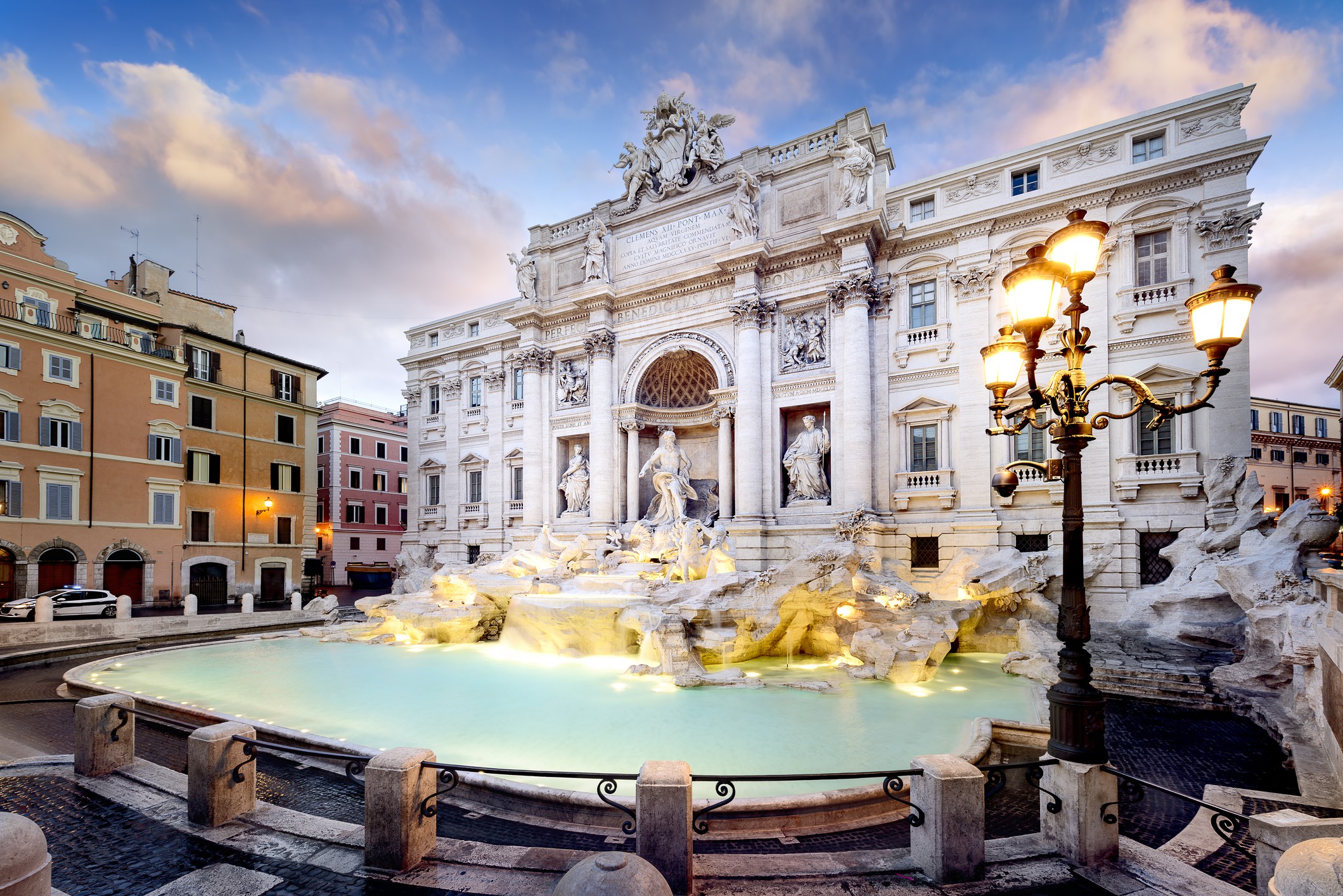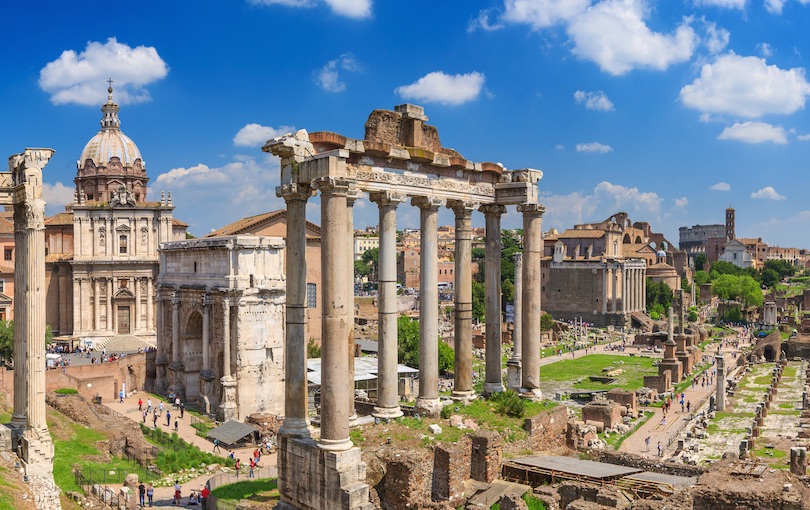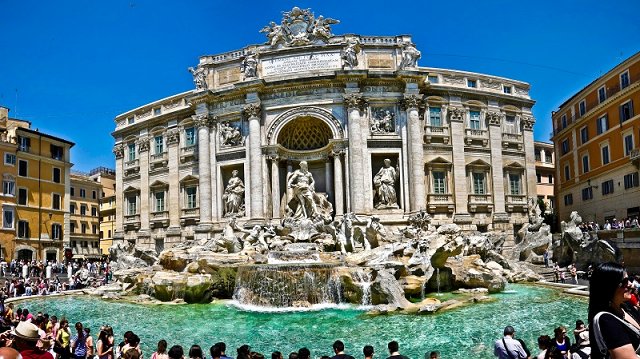The brilliant blog 0342
Which country has the best rome top attractions?

Vatican City is a small, landlocked city-state located in the heart of Rome.
Vatican City is located in Italy. The Vatican City has to do with 110 acres, and has a population of about 800 people. Vatican City has the tiniest population worldwide. The Vatican city was developed by the Lateran Treaty in 1929, which recognized the sovereignty of the Holy See. For a great deal of individuals, the Vatican city is a house to lots of art collections and it's rich history.
The Vatican
Vatican City is house to Saint Peter's Basilica, which contains the Papal Archbasilica of St. John Lateran, the cathedral for Rome and the seat of the pope.
The Vatican is a country located in the heart of Rome, Italy. It is house to Saint Peter's Basilica, which consists of the Papal Archbasilica o. Vatican City. The Pope resides here, along with many other notable individuals. This country is only 90 acres, but it encompasses a few of the earliest structures in all of Europe. Saint Peter's square is one of the most famous places in all of Rome and it draws countless tourists annually.
Date of establishment
Vatican City was established by a treaty in between Italy and Pope Pius XI in 1929 in order to create an independent state governed by the Holy See.
Vatican City is among the tiniest nations on the planet, however it's likewise one of the most powerful. Established in 1929 by a treaty in between Italy and Pope Pius XI, Vatican City is home to the Papacy. The Papacy has actually always been a secular organization, with temporal power that originates from God and not from any earthly source. This little city-state is secured by Italy and has its own Constitution and laws.
What is Vatican City?
The Vatican City is an independent city-state that covers 108.7 acres, which is coterminous with the tiniest nation on the planet. It is governed by the Pope of the Catholic Church, whose ecclesiastical jurisdiction is independent of any other states.
The Location of Vatican City
The smallest country on the planet, Vatican City is a walled enclave of Rome, Italy. Found on a group of hills in the center of Rome, it is just over 110 acres in attractions in rome area and is considered among the most largely populated locations in the world. In addition to being a sovereign state, Vatican City is also an ecclesiastical state ruled by the Bishop of Rome who lives in the Papal Palace.
Population in the city
The Vatican is the tiniest nation on the planet, and with a population of simply 836, they rank as the 2nd least populated nation in Europe. Vatican City is located in Rome and has been an independent state for over 2000 years.
Established in 1929, Vatican City is about 110 acres and has 880 homeowners. The population size has actually remained fairly unchanged considering that the 1990s.
Politics: Vatican City is dominated by the Catholic Church.
The Vatican City is the tiniest independent state in the world. It likewise happens to be the only one that has a predominantly Catholic population. The country's politics are controlled by Catholicism, and they have been since it was established in 1929. The most current election highlights this, with Pope Francis being chosen in 2013, who then ended up being the first pope to be born outside of Europe.
The weather
Vatican City experiences a Mediterranean climate, but it experiences cold winter seasons and hot summertimes.
Vatican City is a nation that incorporates simply over 100 acres of land. The little nation is located in Rome, Italy and has a population of just under 800 people. Vatican City is not only the smallest country worldwide however also the smallest sovereign state.
The weather in Vatican City is classified as a Mediterranean environment, which means enjoyable summertimes and moderate winters. Temperatures throughout the summer average around 81 degrees Fahrenheit, with 10 inches of rains.
Which country has the best travel guide?

Centro Storico is a district of Rome, Italy.
Centro Storico is a district of Rome, Italy. It is home to the Spanish Steps and Piazza di Spagna. This area has actually been the focus of restoration efforts in Rome, and is now one of the wealthiest areas in the city. Centro Storico has many lovely churches, which deserve exploring by foot or bike.
Ancient Rome: Centro Storico was when the heart of ancient Rome.
The Spanish Actions, located near the Piazza di Spagna, are one of the most recognizable landmarks in Rome. Both residents and visitors can be discovered appreciating the stairs, either to take photos for social networks or to use as an area for selfies. The Spanish Actions was beach vacation built as a part of the Aurelian Wall, which originally was a security versus attacks by the Barbarians. The Stairways are the only staying part of the wall. Piazza di Spagna: The very first piazza was built in the Renaissance period. Called after the Spanish Actions, it is home to numerous lovely churches, consisting of the Pantheon. These churches were all developed in a design of early Renaissance architecture.
Design: The Spanish Actions were developed by Gian Lorenzo Bernini in 1723.
The Spanish Actions are a world-famous, archaeological site in the city of Rome. The public staircase spans about 100 meters and stands just over 10 meters tall. The actions were created by Gian Lorenzo Bernini and commissioned by Pope Urban VIII for his massive city renewal project known as the "Roma Novissima" which was meant to give the city a more grandiose and dignified atmosphere. The stairs have actually also seen a lot of use as a shooting area.
Competition: In 2011 a competitors was released to redevelop a vacant lot on the Spanish Enter a public area.
The landmark Spanish Steps are one of the most recognizable destinations in Rome. The steps are located on the Via del Corso, which is also known as Via Largo di Torre Argentina. Every year there are over three million visitors to see this beautiful website. Centro Storico & the Spanish Actions, a competitors launched in 2011, aimed to redevelop a vacant lot on the Spanish Enter a worldwide imaginative hub for style, style and art.
Centro Storico: Walkable, bikeable, and quickly available
Spanish Steps: Stunning view of the city
The Spanish Steps are among the most identifiable landmarks in Rome. It is at the foot of the Spanish Steps that individuals can take pleasure in a picturesque view of the city. This is also where you will discover lots of stores, restaurants, and gelato stands. The Spanish Actions are so named because they were commissioned by Spain in 1716 to honor an alliance with Austria. They were created in 1723 by designer Francesco de Sanctis and integrated in 1725.
Conclusion: Centro Storico is an area with rich history and stunning design, it will be amazing
Centro Storico is a popular tourist destination in Rome with its rich history and gorgeous style. There are many dining establishments, stores, and archaeological sites within the area of this district. One of the best locations to check out in the area is the Spanish Actions which was developed by a French designer between 1723 and 1725.
What are the top 10 most popular destinations in the world?

Centro Storico is a district of Rome, Italy.
Centro Storico is a district of Rome, Italy. It is house to the Spanish Steps and Piazza di Spagna. This community has been the focus of repair efforts in Rome, and is now one of the most affluent areas in the city. Centro Storico has numerous beautiful churches, which deserve exploring by foot or bike.
Ancient Rome: Centro Storico was as soon as the heart of ancient Rome.
The Spanish Actions, situated near the Piazza di Spagna, are one of the most recognizable landmarks in Rome. Both locals and visitors can be discovered appreciating the stairs, either to take photos for social networks or to utilize as an area for selfies. The Spanish Actions was built as a part of the Aurelian Wall, which originally was a defense against attacks by the Barbarians. The Stairways are the only staying part of the wall. Piazza di Spagna: The first piazza was built in the Renaissance period. Named after the Spanish Steps, it is house to numerous beautiful churches, including the Pantheon. These churches were all developed in a style of early Renaissance architecture.
Design: The Spanish Steps were developed by Gian Lorenzo Bernini in 1723.
The Spanish Steps are a world-famous, historical site in the city of Rome. The public staircase spans about 100 meters and stands simply over 10 meters high. The actions were created by Gian Lorenzo Bernini and commissioned by Pope Urban VIII for his enormous urban renewal task referred to as the "Roma Novissima" which was implied to provide the city a more grand and dignified environment. The stairs have actually likewise seen a great deal of use as a shooting place.
Competitors: In 2011 a competitors was introduced to redevelop an uninhabited lot on the Spanish Enter a public space.
The landmark Spanish Steps are one of the most recognizable attractions in Rome. The actions lie on the Via del Corso, which is also called Via Largo di Torre Argentina. Every year there are over 3 million visitors to see this stunning site. Centro Storico & the Spanish Actions, a competitors introduced in 2011, intended to redevelop a vacant lot on the Spanish Steps into a global creative hub for fashion, design and art.
Centro Storico: Walkable, bikeable, and quickly accessible
Spanish http://waylonvbqp637.lowescouponn.com/which-country-has-the-best-vacation-to-go Actions: Attractive view of the city
The Spanish Actions are among the most identifiable landmarks in Rome. It is at the foot of the Spanish Actions that individuals can enjoy an attractive view of the city. This is likewise where you will find numerous stores, dining establishments, and gelato stands. The Spanish Actions are so called because they were commissioned by Spain in 1716 to commemorate an alliance with Austria. They were created in 1723 by architect Francesco de Sanctis and built in 1725.
Conclusion: Centro Storico is a location with rich history and beautiful design, it will be exciting
Centro Storico is a popular tourist location in Rome with its abundant history and lovely design. There are many restaurants, stores, and historical sites within the location of this district. Among the best locations to go to in the location is the Spanish Steps which was built by a French architect in between 1723 and 1725.
Which vacation destinations fall in love easily?
/DSC_0053-5c76c0bdc9e77c0001fd5938.jpg)
Centro Storico is a district of Rome, Italy.
Centro Storico is a district of Rome, Italy. It is house to the Spanish Steps and Piazza di Spagna. This community has actually been the focus of restoration efforts in Rome, and is now among the wealthiest neighborhoods in the city. Centro Storico has many gorgeous churches, which are worth exploring by foot or bike.
Ancient Rome: Centro Storico was as soon as the heart of ancient Rome.
The Spanish Steps, located near the Piazza di Spagna, are one of the most recognizable landmarks in Rome. Both locals and visitors can be discovered appreciating the stairs, either to take photos for social networks or to use as an area for selfies. The Spanish Steps was built as a part of the Aurelian Wall, which initially was a security against attacks by the Barbarians. The Stairs are the only staying part of the wall. Piazza di Spagna: The first piazza was constructed in the Renaissance period. Called after the Spanish Actions, it is home to lots of stunning churches, consisting of the Pantheon. These churches were all developed in a style of early Renaissance architecture.
Design: The Spanish Steps were designed by Gian Lorenzo Bernini in 1723.
The Spanish Actions are a world-famous, historical site in the city of Rome. The public staircase covers about 100 meters and stands just over 10 meters tall. The steps were developed by Gian Lorenzo Bernini and commissioned by Pope Urban VIII for his huge urban renewal task known as the "Roma Novissima" which was suggested to give the city a more grandiose and dignified atmosphere. The stairs have likewise seen a great deal of usage as a filming location.
Competitors: In 2011 a competition was introduced to redevelop a vacant lot on the Spanish Steps into a public area.
The landmark Spanish Steps are one of the most recognizable tourist attractions in Rome. The actions lie on the Via del Corso, which is likewise called Via Largo di Torre Argentina. Every year there are over 3 million visitors to see this stunning website. Centro Storico & the Spanish Actions, a competitors released in 2011, intended to redevelop an uninhabited lot on the Spanish Enter a worldwide creative center for style, design and art.
Centro Storico: Walkable, bikeable, and easily accessible
Spanish Steps: Attractive view of the city
The Spanish Steps are among the most recognizable landmarks in Rome. It is at the foot of the Spanish Actions that people can take pleasure in an attractive view of the city. This is likewise where you will find numerous shops, restaurants, and gelato stands. The Spanish Steps are so named since they were commissioned by Spain https://blogfreely.net/cirdanfqoi/img-dx26 in 1716 to commemorate an alliance with Austria. They were developed in 1723 by designer Francesco de Sanctis and integrated in 1725.
Conclusion: Centro Storico is a location with abundant history and gorgeous design, it will be amazing
Centro Storico is a popular traveler location in Rome with its rich history and lovely style. There are numerous dining establishments, stores, and historical sites within the area of this district. One of the best places to check out in the area is the Spanish Steps which was constructed by a French designer between 1723 and 1725.
Best budget backpacker for Firs-Timers

Centro Storico is a district of Rome, Italy.
Centro Storico is a district of Rome, Italy. It is house to the Spanish Steps and Piazza di Spagna. This area has been the focus of remediation efforts in Rome, and is now one of the wealthiest areas in the city. Centro Storico has many lovely churches, which are worth checking out by foot or bike.
Ancient Rome: Centro Storico was once the heart of ancient Rome.
The Spanish Steps, situated near the Piazza di Spagna, are among the most identifiable landmarks in Rome. Both locals and visitors can be found appreciating the stairs, either to take images for social networks or to utilize as an area for selfies. The Spanish Actions was developed as a part of the Aurelian Wall, which initially was a protection versus attacks by the Barbarians. The Stairways are the only staying part of the wall. Piazza di Spagna: The very first piazza was built in the Renaissance period. Called after the Spanish Steps, it is home to many beautiful churches, including the Pantheon. These churches were all designed in a design of early Renaissance architecture.
Style: The Spanish Actions were created by Gian Lorenzo Bernini in 1723.
The Spanish Steps are a world-famous, historical site in the city of Rome. The public staircase covers about 100 meters and stands simply over 10 meters high. The steps were designed by Gian Lorenzo Bernini and commissioned by Pope Urban VIII for his massive urban renewal job referred to as the "Roma Novissima" which was suggested destinations to provide the city a more grand and dignified environment. The stairs have also seen a lot of use as a filming area.
Competition: In 2011 a competitors was introduced to redevelop a vacant lot on the Spanish Steps into a public area.
The landmark Spanish Steps are one of the most recognizable tourist attractions in Rome. The steps are located on the Via del Corso, which is likewise known as Via Largo di Torre Argentina. Every year there are over 3 million visitors to see this beautiful website. Centro Storico & the Spanish Steps, a competitors released in 2011, intended to redevelop an uninhabited lot on the Spanish Steps into an international innovative center for fashion, design and art.
Centro Storico: Walkable, bikeable, and quickly accessible
Spanish Steps: Stunning view of the city
The Spanish Actions are one of the most recognizable landmarks in Rome. It is at the foot of the Spanish Steps that people can delight in a picturesque view of the city. This is also where you will discover lots of shops, restaurants, and gelato stands. The Spanish Steps are so called due to the fact that they were commissioned by Spain in 1716 to honor an alliance with Austria. They were designed in 1723 by designer Francesco de Sanctis and integrated in 1725.
Conclusion: Centro Storico is an area with rich history and gorgeous design, it will be interesting
Centro Storico is a popular traveler destination in Rome with its rich history and stunning design. There are lots of dining establishments, stores, and historical sites within the location of this district. One of the very best places to visit in the location is the Spanish Steps which was constructed by a French architect between 1723 and 1725.
